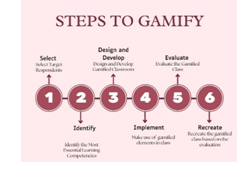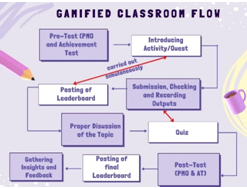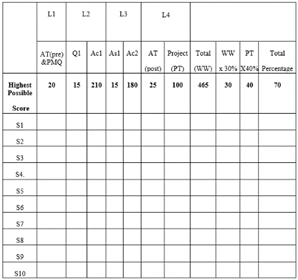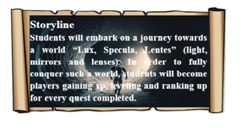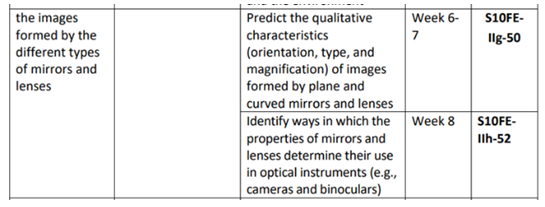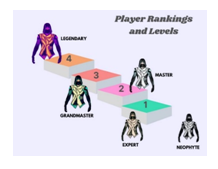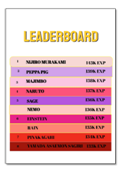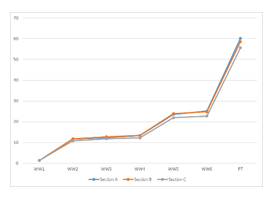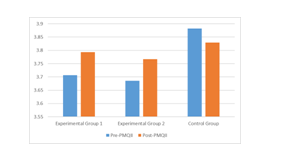Implementation of Inquiry – Based Lesson on Lights, Mirrors and Lenses in A Gamified Classroom
- Luis Bryant C. Canino
- Sotero O. Malayao Jr
- Noel Lito B. Sayson
- 2614-2624
- Jun 26, 2024
- Education
Implementation of Inquiry – Based Lesson on Lights, Mirrors and Lenses in A Gamified Classroom
Luis Bryant C. Canino*, Sotero O. Malayao Jr., Noel Lito B. Sayson
College of Education, Iligan Institute of Technology Mindanao State University, Misamis Occidental, Philippines
*Corresponding Author
DOI : https://dx.doi.org/10.47772/IJRISS.2024.805190
Received: 30 April 2024; Revised: 16 May 2024; Accepted: 21 May 2024; Published: 26 June 2024
ABSTRACT
Academic motivation has long been hailed as driver for improved academic engagement leading to improved academic achievement. This is the very premise of this study that a low-performing group of learners will be motivated to work harder for improved academic performance. The study started with the utilization of developed guided-inquiry virtual laboratory activities that were delivered as part of the lesson in a gamified context. The study utilized three heterogeneous grade 10 sections of a private school in Misamis Occidental. One section is generally a better-performing section and was made the control section, while the remaining two low-performing sections were taken as the experimental sections. The whole gamification activity involves four leader board displays where the first leader board showed equal initial performance for all learners. Results showed that the low-performing classes performed with very little difference with high performing control group. The normalized gain for all sections were all medium gain. The study points to the efficacy of a gamified classroom utilizing virtual activities in improving academic performance as indicated in the results of the normalized gain.
Keywords: gamification, inquiry-based lesson, physics, light, mirror and lenses, academic motivation, academic performance
INTRODUCTION
Science subjects are perceived to be challenging. Due to this, educators find ways to deliver the best education to the students despite the challenges. One of these challenges is the low achievement of students in science. In the recent Program for International Student Assessment (PISA) 2022 exam, the Philippines placed third lowest in the Science ranking of countries globally (Chi, 2023).Another challenge faced by science educators specifically in the current teaching-learning era is the manner or way in which they will deliver the lessons effectively. Given the limitations such as access to physical laboratories and the complexity of the lessons, the teachers need to support their teaching strategies and methods innovatively. The integration of a new teaching strategy in the classroom is a way to address the challenges in learning.
One way to address this challenge is through the use of simulations. Educational simulation is a teaching method that evaluates participants’ knowledge and ability levels by placing them in situations where they must actively solve problems. The guidelines are established by the instructor to ensure a secure setting for experiential learning (Mozafaripour, 2023).
Physics Education Technology (Ph ET) simulations are used simultaneously with the game elements in the inquiry-based lesson used in this study. Inquiry-based lessons highlight the queries, concepts, and observations of the students. Teachers actively encourage discussion among their students as well as politely testing, restructuring, and challenging ideas (Top Hat, 2019).
A novel idea in education has surfaced that addresses students’ engagement and motivation, adding entertainment while maintaining the quality of learning. This is the introduction of gamification in education. Gamification is the process of incorporating game mechanics, game theory, game aesthetics, and the emotional connection we have to games into the way we instruct to engage students in learning (Davis & Bellocchi, 2020).
Fig.1: Steps to Gamify
In this research, a gamified manual will be developed to aid the teacher in gamifying the classroom. The gamification steps include selecting, identifying, designing & developing, implementing, evaluating, and recreating.
Simulation-based laboratory activities were also utilized to help facilitate the incorporation of gamification in the classroom. The purpose of this research study is to examine the effectiveness of gamification in a physics class.
Gamification as a novel feedback system for student classroom performance applies to all classrooms and all types of intervention. It has been discovered that gamification works well in a variety of educational settings. It has been demonstrated to enhance learning outcomes and boost student engagement (Vanacore et al., 2023). This study will use developed simulation-based guided inquiry activities on mirrors and lenses. This set of activities was developed and validated by another researcher in the person of Kennette Arboiz.
The set of activities served as a complete learning packet complete with the lesson plan, formative assessments, and achievement tests. The package was configured to fit into the class schedule of the school that permitted its implementation.
METHODOLOGY
Research Design
The study employed a quasi-experimental design with quantitative and qualitative data support. Quantitative data was used to measure students’ academic motivation and achievement while qualitative data consisted of the students’ and teachers’ insights and feedback on implementing the gamified class.
The researcher developed a gamified classroom consistent with the DepEd-prescribed grading system containing written works and performance tasks.
Research Subjects
The study’s respondents were 153 (one hundred fifty-three) Grade 10 heterogeneous students from the three sections of a private school in Calamba, Misamis Occidental. Section A was the control group while Sections B & C were the experimental groups.
Research Setting
This study will be implemented in a private school using three intact sections. The school is located in the municipality of Calamba, Misamis Occidental, Philippines.
Data Gathering Procedure
Develop a Gamified Classroom
Develop a gamified classroom based on a validated lesson package in a guided inquiry delivery for Grade 10.
Fig 2: Gamified Classroom Flow
The Use of the Analyze, Design, Develop, Implement and Evaluate (ADDIE) model and evaluation of the gamified classroom
The ADDIE model was utilized in crafting the gamified classroom manual that will aid the implementation of the gamified classroom. This manual was developed and implemented in this study; consisted of game elements such as leader boards, experience points, and badges presented in the classroom and was reviewed and evaluated by the panel of evaluators and graduate students.
Fig 3: ADDIE Model
Determine Student’s Outcomes
Determine the students’ outcomes in the gamified classroom.
Student outcomes in terms of:
Written works (WW) grade (Quests)
The written works grades of the students are composed of their scores in their quizzes, assignments, activities, and achievement tests.
Performance tasks (PT) grade (Group Project)
The performance task grade of the students was determined through the scores they gained for their group project (the making of a model of a pinhole camera).
Experience Points (ExP)
For experience points, students can gain from a total of six quests, five intended for written works and one for the performance task. Students can procure up to 130,000 experience points.
Actual Grade Contribution
The actual grade contribution comprised the 30% written works and the 40% performance task percentage grade.
Figure 4: Actual Grade Contribution Template
The written works of the students include the achievement test (AT) pretest and posttest, quiz (Q) 1, and activities 1 & 2 (Act 1& 2). There was only one performance task which was a group science project.
Achievement test (Pre and post-test)
The achievement test is comprised of 25 questions. The normalized gain score is used to determine if the intervention made through the gamified class and inquiry-based lessons caused a positive gain toward the student’s academic performance.
Student’s Academic Motivation
Physics Motivation Questionnaire (PMQ) II measured the changes in students’ motivation in physics in terms of the following factors: Intrinsic Motivation, Self-efficacy, Self – determination, Grade motivation, and Career Motivation.
Gather feedback and insights: Gather the student’s and teacher’s feedback and insights on the gamified classroom.
Administration of Insights and Feedback Questionnaire for Students and Teachers
The insights and feedback questionnaire comprised open-ended three-item questions to get the students’ and teacher’s perceived usefulness of the lesson package and gamified classroom, their advantages and disadvantages, and how they can be improved.
Data Analysis
Data collection methods included pre and post-surveys to measure students’ academic motivation and performance. Data were analyzed using descriptive statistics, One – Way Analysis of Variance (ANOVA), and Post Hoc results.
RESULTS
Development of the Gamified Class
Games Elements Used in the Gamified Class
The game elements used in the study were quests (activities), storyline, badges, experience points, badges, aliases, rules, levels, leaderboards, and rewards.
Figure 4: Storyline
Allotment of Quests, Experience Points, and Budget of Work
The quests, experience points, and budget of work were allotted for an 8-day implementation of the gamified class.
Development of Quests
Quests are developed based on the most essential learning outcomes (MELCs) prescribed by the Department of Education.
Figure 5: Most Essential Learning Competencies
The most essential learning competencies determine the relevant knowledge and skills needed by students for their future academic endeavors.
Evaluation of the Gamified Class for Light, Mirrors, and Lenses (LML)
The panel of evaluators and graduate students validated the LML gamified class resulting in the developed gamified class manual.
Students’ Academic Performance
Written Works
41.51% of the control group (Section A) (N= 53) got a written works grade of 85-89 interpreted as “Proficient” while the experimental groups (Sections B & C) (N=49, 51) got a written works grade of 80-84 with 35.29% interpreted as “Approaching Proficiency” and 75-79 with 65.31% interpreted as “Developing” respectively.
Performance Task
Section A got a performance task grade of 90-100 with 58.49% interpreted as “Advanced”.
While 85-89 with 58.82% interpreted as “Proficient” and 80-84 with 55.10% interpreted as “Approaching Proficiency” were the performance task grades of Sections B & C respectively.
Experience Points, Levels, Leader boards, and Grade Contribution
Sections B & C (the gamified classes) reached Level 4/ Leader board 4 (the highest level – legendary rank) with 98.04% and 89.90% of each classroom population respectively.
The highest level requires 100,000 EXP and above. The mean grade contribution of Section A was 60.20 and Sections B & C were 58.47 and 55.58 respectively.
Table 1: Levels Reached by Sections B & C (Experimental Groups)
| Levels
Reached |
Frequency | |||
| Section B | Percentage | Section C | Percentage | |
| 4 | 50 | 98.04% | 44 | 89.80% |
| 3 | 0 | 0.00% | 0 | 0.00% |
| 2 | 0 | 0.00% | 2 | 4.08% |
| 1 | 1 | 1.96% | 3 | 6.12% |
| Total | 51 | 100% | 49 | 100% |
Levels
Figure6: Levels and Rankings
The figure shows the levels and ranking of the students before and during the implementation of the gamified class. The students were given an initial rank of “Neophyte”.
The level started at Level 1 with a rank labeled as “Expert”. The highest level was Level4 and the equivalent ranking was labeled “Legendary”.
Leader board
Figure7: Sample Leader board
The leader board showed the standing of the students in their performance in the gamified class. There were four leader boards reported during the implementation of the gamified class on lights, mirror and lenses.
Graph of Mean Grade Contribution
Figure8: Mean Grade Contribution
The graph above shows the mean grade contribution of the three sections per quest—quests composed of the 6 written works and 1 performance task. The graph trend showed a great spike on the addition of the performance task which is equivalent to 40% grade contribution. Written works was about 30% of the student’s grade contribution.
Normalized Gain
The gain score of Section A was 0.578 while the gain score of Sections B & C were 0.4201 and 0.315respectively.All gain scores of the three sections are interpreted as “Average” or “Medium” as shown in the table below.
Table 2: Mean Class Gain
| Section | Pretest Mean | Posttest Mean | Mean Class Gain | Interpretation |
| A | 8.683 | 18.113 | 0.578 | Average |
| B | 6.833 | 14.137 | 0.4201 | Average |
| C | 7.269 | 12.167 | 0.315 | Average |
Student’s Academic Motivation
Fig.2: Academic Motivation of the Students
Sections B and C’s overall mean motivation slightly increased from 3.707 to 3.793 and 3.686 to 3.767 respectively. In comparison, Section A’s overall mean motivation slightly decreased from 3.882 and 3.829 respectively. All motivation scores of the three sections are interpreted as” Very High”.
Students’ and Teachers’ Insights and Feedback on the Gamified Class
The grade 10 science teachers saw the gamified classroom as a useful tool for raising students’ academic motivation, engagement, and learning, all of which positively impacted their academic performance. The student respondents perceived the good points of a gamified class include new discovery, opportunities to learn, real-life connections, and an engaging and interactive atmosphere.
CONCLUSION
The grade 10 students’ academic motivation and achievement in Light, Mirrors, and Lenses were improved by implementing the designed and developed gamified Light, Mirrors, and Lenses (LML) class as supported by the quantitative and qualitative data findings.
RECOMMENDATIONS
This study’s recommendations are to design and develop another gamified class that is meant to last for one quarter, to have more science educators and specialists to assess the designed and evaluated gamified class, to present the equivalent percentage of the grade of the students, and to make use of online platforms and applications that will enhance the student’s learning experience in a gamified class.
ACKNOWLEDGMENT
I would like to give my special thanks to DOST and MSU-IIT for giving me the opportunity to finish my master’s degree. I would like to also express my deepest thanks to my thesis advisers, my parents, friends, and colleagues.
REFERENCES
- Alvarez, K. S. (2021). Using virtual simulations in online laboratory instruction and active learning exercises as a response to instructional challenges during covid-19. Journal of Microbiology & Biology Education, 22(1). https://doi.org/10.1128/jmbe.v22i1.2503
- Ahmed, W. (2006). A structural model of self-concept, autonomous motivation and academic performance in cross-cultural perspective 1. https://shorturl.at/iBLQ8
- Ahmed, F., Ali, S., & Shah, R. A. (2019). Exploring variation in summative assessment: language teachers’ knowledge of students’ formative assessment and its effect on their summative assessment. Bulletin of Education and Research, 41(2), 109–119. http://files.eric.ed.gov/fulltext/EJ1229441.pdf
- Aregehagn, E., Lykknes, A., Getahun, D. A., & Febri, M. I. (2023). Representation of image formation—observation in optics in Ethiopian textbooks: student learning difficulties as an analytical tool. Education sciences, 13(5), 445.
- Benben, V. Y., & Bug-Os, M. a. a. C. (2022). Physics students’ academic achievement and motivation in a gamified formative assessment. American Journal of Educational Research, 10(6), 385–390. https://doi.org/10.12691/education-10-6-2
- Bernardo, A. B. I., Cordel, M. O., Calleja, M. O., Teves, J. M. M., Yap, S. A., & Chua, U. C. (2023). Profiling low-proficiency science students in the Philippines using machine learning. Humanities & Social Sciences Communications, 10(1). https://doi.org/10.1057/s41599-023-01705-y
- Chi, C. (2023, December 9). Philippines still lags behind world in math, reading and science — PISA 2022. Philstar.com. https://www.philstar.com/headlines/2023/12/06/2316732/philippines-still-lags-behind-world-math-reading-and-science-pisa-2022
- Cloke, H. (2023, December 19). Gamification: Leaderboards in learning technology. Growth Engineering. https://tinyurl.com/dx9xcuf3.
- Constructivist Theory by Richard Hall. (2023). https://web.mst.edu/~rhall/ed_psych/constructivism.html
- Cook, David & Artino, Anthony. (2016). Motivation to learn: an overview of contemporary theories. Medical Education. 50. 997-1014. 10.1111/medu.13074.
- Davis, J.P., & Bellocchi, A. (2020) Gamification of SSI’s as a science pedagogy: toward a critical rationality in teaching science. In M. Evagorou, J.A. Nielsen & J. Dillon (Eds.) Science teacher education for responsible citizenship: towards a pedagogy for relevance through socio-scientific issues (pp. 101-116). The Netherlands, Springer. https://doi.org/10.1007/978-3-030-40229-7
- Durin, F., Lee, R., Bade, A., On, C. K., & Hamzah, N. (2019). Impact of implementing game elements in gamifying educational environment: a study. Journal of Physics: Conference Series, 1358, 012064. https://doi.org/10.1088/1742-6596/1358/1/012064
- Erickson, A. (2020). Gamification. Cc_By. https://edtechbooks.org/studentguide/gamification
- Fuertes, H. G., Evangelista, I. A., Marcellones, I. J. Y., & Bacatan, J. R. (2023). Student engagement, academic motivation, and academic performance of intermediate level students. Zenodo (CERN European Organization for Nuclear Research). https://doi.org/10.5281/zenodo.8037103
- Gamification in Science EducMozafaripour, S. (2023). How simulation in education benefits students and patients. University of St. Augustine for Health Sciences. https://tinyurl.com/mvfuuxrt
- Guided Inquiry | Learner Variability Project. (2023). Lvp.digitalpromiseglobal.org. Retrieved October 24, 2023, from https://lvp.digitalpromiseglobal.org/content-area/math-pk-2/strategies/guided-inquiry-math-pk-2/summary#:~:text=In%20guided%20inquiry%2C%20teachers%20help
- Hassan, Aliyu & Abdul Talib, Corrienna. (2022). Implementation of a game-based student response system in engaging, motivating, concentrating, and apprehending students’ interest in learning.”The Environment and Sustainable Development”. 2022. 1-24.
- Hawthorne, H. (2024, February 16). Effective interventions in education: types and examples. The Hub | High Speed Training. https://www.highspeedtraining.co.uk/hub/effective-interventions-in-education/
- Intrinsically motivating instruction (Malone) – Learning Theories. (2020, March 5). https://learning-theories.com/intrinsically-motivating-instruction-malone.html
- İsmail, Nik & Tekke, Mustafa. (2015). Rediscovering Rogers’s self theory and personality. Journal of Educational, Health and Community Psychology. 4. 2088-3129.
- Ismail, S. M., Rahul, D. R., Patra, I., & Rezvani, E. (2022). Formative vs. summative assessment: impacts on academic motivation, attitude toward learning, test anxiety, and self-regulation skill. Language Testing in Asia, 12(1). https://doi.org/10.1186/s40468-022-00191-4
- Ismath, N. H. M., Jalil, S. Z., & Rahman, T. a. F. T. A. (2022). The effectiveness of gamification in learning Arabic cohesive devices. ATTARBAWIY Malaysian Online Journal of Education, 6(2), 28–36. https://doi.org/10.53840/attarbawiy.v6i2.96
- Chem. Educ. 2023, 100, 1, 170–177 Publication Date:December 5, 2022 https://doi.org/10.1021/acs.jchemed.2c00089
- Kumar, R. (2021). “Mirrors and lenses”: concept and conceptual change in indian science classroom. Du-in. https://www.academia.edu/41349755/Mirrors_and_Lenses_Concept_and_Conceptual_Change_in_Indian_Science_Classroom?auto=download
- Kurt, S. (2018, December 16). ADDIE model: instructional design – educational technology. Educational Technology. https://educationaltechnology.net/the-addie-model-instructional-design/
- Lateef, F. (2010). Simulation-based learning: just like the real thing. Journal of Emergencies, Trauma, and Shock, 3(4), 348–352. https://doi.org/10.4103/0974-2700.70743
- Llego, M. A. (2021, November 13). DepEd K to 12 grading system steps for computing grades. TeacherPH. https://www.teacherph.com/deped-grading-system/
- Lutfi, A. (2023, January 29). Gamification: Game as a medium for learning chemistry to motivate and increase retention of student learning outcomes. Lutfi | Journal of Technology and Science Education. https://jotse.org/index.php/jotse/article/view/1842/685
- Machemy, J., & Bousquet, B. (2015, June). Conception of comics dedicated to optics’ learning. In Education and Training in Optics and Photonics (p. TPE25). Optica Publishing Group.
- Martinez, J. (2024). Feedback and gamification: how they can be applied to an online course. Northwestern University.
- Morris, B. J., Croker, S., Zimmerman, C., Gill, D., & Romig, C. J. (2013). Gaming science: the “gamification” of scientific thinking. Frontiers in Psychology, 4. https://doi.org/10.3389/fpsyg.2013.00607
- (N.d.-b). Researchgate.net. Retrieved November 7, 2023, from https://www.researchgate.net/publication/341157055_Increasing_Student_Motivation_in_College_Physics_with_Gamified_Instruction
- (N.d.). Researchgate.net. Retrieved November 7, 2023, from https://www.researchgate.net/publication/327869231_Learning_Physics_the_Gamified_Way
- Okariz, A., Huebra, M., Sarasola, A., Ibarretxe, J., Bidegain, G., & Zubimendi, J. L. (2023). Gamifying physics laboratory work increases motivation and enhances acquisition of the skills required for application of the scientific method. Education Sciences, 13(3), 302. https://doi.org/10.3390/educsci13030302
- Ng, M. P., Alias, N., & DeWitt, D. (2022). Effectiveness of a gamification application in learning mandarin as a second language. malaysian journal of learning & instruction, 19. https://doi.org/10.32890/mjli2022.19.2.7
- Repossi, P. (2019, June). Learning optics from the history. In Journal of Physics: Conference Series (Vol. 1221, No. 1, p. 012054). Iop Publishing.
- Sebald, J., Fliegauf, K., Veith, J. M., Spiecker, H., & Bitzenbauer, P. (2022). The world through my eyes: fostering students’ understanding of basic optics concepts related to vision and image formation. Physics, 4(4), 1117-1134.
- Signh S. (2014) Action research on lenses. PDF. https://www.slideshare.net/angelbindusingh/action-research-on-lenses
- Science teacher education for responsible citizenship. (2020). Contemporary trends and issues in science education. https://doi.org/10.1007/978-3-030-40229-7
- Simulation as a teaching strategy. (2023). Kent State University. https://www.kent.edu/ctl/simulation-teaching-strategy
- Smiderle, R., Rigo, S.J., Marques, L.B. et al. The impact of gamification on students’ learning, engagement and behavior based on their personality traits. Smart Learn. Environ. 7, 3 (2020). https://doi.org/10.1186/s40561-019-0098-x
- Spiecker, H., & Bitzenbauer, P. (2022). Phenomenological optics with self-made liquid lenses in the physics classroom. Physics Education, 57(4), 045012.
- Steinbeiß, Gregor. (2017). Minecraft as a learning and teaching tool – designing integrated game experiences for formal and informal learning activities.
- Tancredi, H. (2020, June 23). Teaching school science by gamification – the centre for inclusive education. The Centre for Inclusive Education. https://research.qut.edu.au/c4ie/2020/05/11/teaching-school-science-by-gamification/
- Teaching with simulations. (2023). NSTA. https://tinyurl.com/yf28h53a
- Title, C. (2020, August 27). Guided inquiry learning – definition, teaching process, and tools. The Beagle Blog. https://www.beaglelearning.com/blog/inquiry/guided/
- Toda, A. M., Klock, A. C. T., Oliveira, W., Palomino, P. T., Rodrigues, L., Shi, L., Bittencourt, I. I., Gasparini, I., Isotani, S., & Cristea, A. I. (2019). Analysing gamification elements in educational environments using an existing gamification taxonomy. Smart Learning Environments, 6(1). https://doi.org/10.1186/s40561-019-0106-1
- Tolentino, A. N. (2017). Gamified physics instruction in a reformatory classroom context. De La Salle University.
- Top Hat. (2019, September 16). Inquiry-based learning definition and meaning | Top hat. https://tophat.com/glossary/i/inquiry-based learning/#:~:text=Inquiry %2Dbased%20learning%20is% 20a,challenge%2C%20test%20and%20redefine%20ideas.
- Vanacore, K., Sales, A., Liu, A., & Ottmar, E. (2023). Benefit of gamification for persistent learners: propensity to replay problems moderates algebra-game effectiveness. SCISCPACE. https://doi.org/10.1145/3573051.3593395
- VSG DepEd. (2022, January 10). Feedback and reporting. Retrieved at https://tinyurl.com/y2dvt3mv
- What are the potential drawbacks of using gamification for e-learning? (2023, November 23). www.linkedin.com. https://www.linkedin.com/advice/0/what-potential-drawbacks-using-gamificatione-learning#:~:text=One%20of%20the%20main%20risks,interest%2C%20satisfaction%2C%20or%20performance.
- Zhan, Z., He, L., Tong, Y., Liang, X., Guo, S., & Lan, X. (2022). The effectiveness of gamification in programming education: Evidence from a meta-analysis. Computers & Education: Artificial Intelligence, 3, 100096. https://doi.org/10.1016/j.caeai.2022.100096

